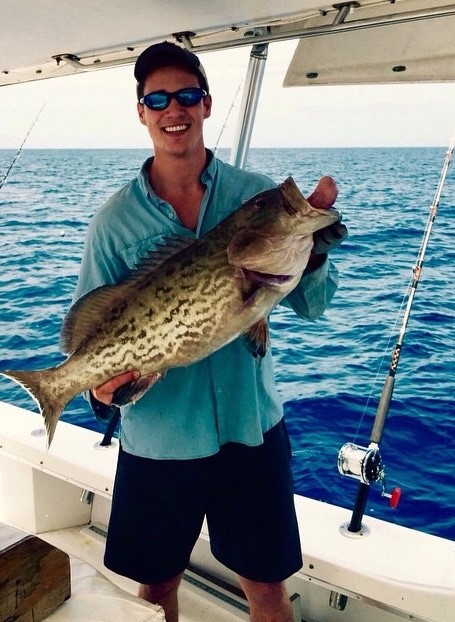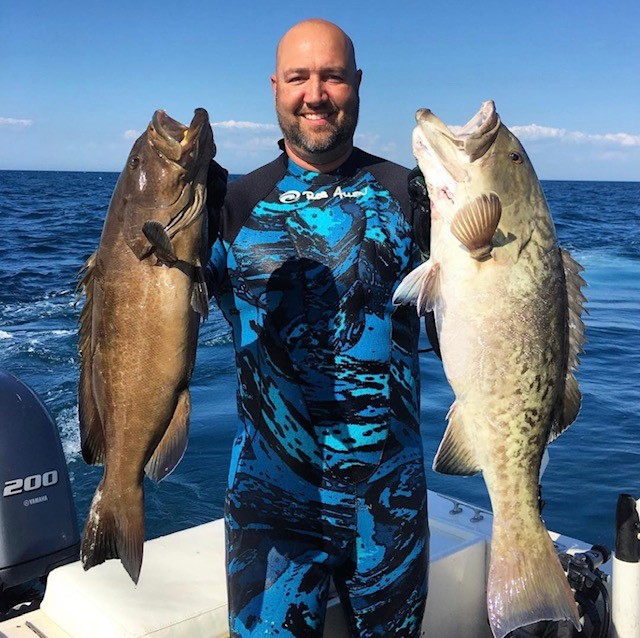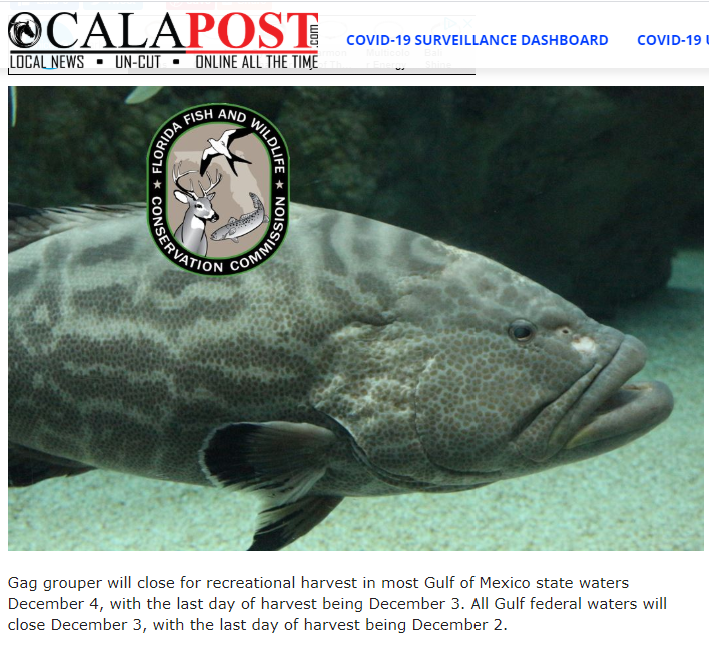Greater amberjack season will be closed in Gulf of Mexico state and federal waters starting June 1st and will reopen August 1st– October 31st 2020. These jacks are still open on the Atlantic side if you are still craving to fill the smoker. On the positive side, gag grouper season will open Monday in the Gulf! The season for this fish will be open from June 1st to December 31st *.

The minimum size limit for gag grouper is 24” total length, each harvester is allowed a daily recreational bag limit of 2 gag within the 4 grouper combined aggregate. Other species that belong to the 4 grouper aggregate limit are: black (allowed 4 fish min 24” TL), red (allowed 2 fish min 20” TL), scamp (allowed 4 fish min 16” TL), yellowfin (allowed 4 fish min 20” TL), yellowmouth (allowed 4 fish 20” TL), rock hind/red hind (allowed 4 fish), coney/grasby (allowed 4 fish), yellowedge/misty (allowed 4 fish), Warsaw/speckled hind (allowed 1 of each) and snowy grouper (allowed 4 fish). Many of these other grouper species may be rarer to find in the Gulf but the possibility of bumping them increases with with fishermen targeting gags down South or in deeper water. Make sure you’re able to correctly identify the difference between gag (M. microlepis) and black (M. bonaci) grouper to avoid costly tickets and to protect the fishery
*(Gag grouper season is different If you fish within state waters of Franklin, Wakulla, Jefferson and Taylor Counties the season is April 1st– June 30th & September 1st – December 31st)
Check this FWC grouper summary page for complete regulations
IFGA World/Florida Record Gag Grouper: 80.38 pounds caught off Destin 10/14/1993
Gag vs Black Grouper
Gag Grouper (Mycteroperca microlepis) Other common names: gray grouper, grass grouper, copper belly, rusty belly, charcoal belly, black grouper
Black Grouper (Mycteroperca bonaci) Other common names: true black grouper, carbo

Theses two species are often misidentified both by name and by appearance. Both groupers exhibit similar life history characteristics and their geographic distributions overlap. There is a general trend that the gag grouper are more common in the Northern regions of Florida and have been recorded as far North as Massachusetts while their cousin, the black grouper, is a more tropical species and is pretty much the default Mycteroperca grouper when visiting Southern regions of Florida like the Keys. As a result, in Northern Florida gag grouper can often be referred to as black grouper since M. bonaci is not as common. When M. bonaci are caught up North or in areas of high geographical overlap, they are often referred to as true black grouper or carbos. The reason for this name jumble stems from the dark coloration that is formed around gag grouper abdomens when they reach a large size, hence the nickname charcoal or rusty belly.

Identification by coloration may be an easy way to determine species and easier when there are both grouper species present; however, color can vary for a variety of reasons (alive/dead, in or out of the water, size/age, location, activity level, genetics etc.) and when in doubt, let the fish swim.
Black grouper can sometimes be distinguished from their dark brown/black coloration, more intense patterns and burnt orange spots on the the skin, these spots are especially around the face. these fish can also have a hint of yellow around the creases of their mouths. Black grouper have a flat edged tail is accompanied by a dark black edge, this black barring can also be seen on the pectoral, anal and latter portion of the dorsal fin. Larger gag grouper can have similar black barring on the latter portion of the dorsal and anal fin but usually lack black barred pattern on the tail. Gag grouper are often more gray or olive in color with less pronounced markings and do have the burnt orange spots. The the anal and caudal fins of gag grouper can have a hint of white on the edge portion. One distinguishing factor I learned from visiting the FWC page on gag grouper is that the bottom of the preopercle (bone midline of the entire gill plate) can be more notched than a black grouper and has a strong serrated spur.

With time, you’ll be experts at identifying grouper species and like I said, it’s very easy to tell when you happen to catch both species that day. I would suggest visiting trusted sites when quizzing yourself as there are plenty of cases of misidentification of grouper on Google Image search. An example can be found on the left, this news article wrote about gag grouper but a black grouper is clearly pictured. Also, when in doubt, check the Fish Rules app for vetted pictures of fish species, the app is great and works offshore without internet.
Catching Grouper in Deeper Water

Fishing release mortality is a thing and may be increased when targeting trophy fish in deeper depths. Many anglers are aware of barotrauma but a good amount of fishermen are unaware that tools exist to help mitigate the effects. There’s nothing worse than seeing a fish floating away to later find it dead or watching a fish you just released get tagged by a shark or a cuda! Properly using venting or descending gear can allow the fish to right itself quicker upon release, help bypass predators and resume normal behavior. Not all fish need to be vented or descended, doing so to a fish that’s not exhibiting symptoms can cause unneeded harm. Learn more about barotrauma and what you can do to help some of your favorite fish by watching this informative video series and reading this brochure prepared by Florida Sea Grant.
FWC Reef Fish Survey
All anglers in the Gulf of Mexico who are targeting reef fish are required to sign up for the Gulf Reef Survey. Why? So fishery managers can have a better idea on what the million plus recreational anglers are targeting/catching. The data will be used to make more informed management decisions. This program is FREE and you can sign up online or when renewing your fishing license. What happens after you sign up? “You may be randomly selected to receive a survey by mail about your fishing activity. The information you provide is used to estimate the total number of recreational fishing trips for reef fish on Florida’s West coast during a given month. Even if you did not fish for Gulf reef fish, your feedback allows scientists to more accurately determine fishing effort.” Participating will not slow you down or be another way the “man” to track you.
Check out this video and their page to find more info:
What species are they interested it?
- red snapper
- gag grouper
- greater amberjack
- lesser amberjack
- banded rudderfish
- almaco jack
- red grouper
- black grouper
- vermilion snapper
- gray triggerfish
Check out our blog on amberjack to learn how to properly identify greater amberjack, lesser amberjack, almaco jack and banded rudderfish
Tight Lines!
 0
0
